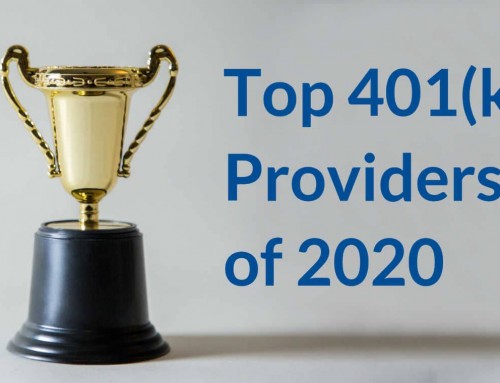As an employer, ensuring the financial well-being of your employees is a crucial responsibility. One key aspect of this is the management and review of your company's 401(k) retirement plan. Regularly assessing and optimizing your 401(k) plan not only demonstrates your commitment to your employees' financial futures but also helps your company stay competitive in attracting and retaining top talent.
In this blog post, I will explore the why and how of reviewing your 401(k) plan annually, providing clear, actionable steps for employers to follow.
Why Review Your 401(k) Plan Annually:
- Employee Satisfaction and Retention: Regularly reviewing and enhancing your 401(k) plan shows your commitment to employee financial well-being. This can contribute to higher job satisfaction and increased retention rates, as employees value employers who invest in their long-term financial security.
- Legal Compliance: Regulations and compliance standards related to retirement plans may change over time. Regular reviews help ensure your plan remains compliant with current laws and regulations, protecting both your company and your employees.
- Market Changes: The financial landscape is dynamic, and market conditions can impact the performance of your 401(k) investments. Annual reviews allow you to adjust investment options based on market trends and economic conditions.
How to Review Your 401(k) Plan Annually:
- Gather Plan Documents: Start by collecting all relevant plan documents, including the plan document itself, summary plan description, and any amendments. Ensure that these documents are up-to-date and reflect any changes in the company's structure or policies.
- Benchmark Plan Performance: Compare your 401(k) plan's performance against industry benchmarks. Evaluate investment returns, fees, and participation rates. This helps identify areas for improvement and ensures your plan remains competitive.
- Review Investment Options: Assess the range of investment options offered within the plan. Ensure that the investment lineup aligns with the diverse needs and risk tolerances of your employees. Consider adding or removing investment options based on performance and relevance.
- Evaluate Plan Fees: Understand the fees associated with the plan, both for employers and employees. Compare these fees with industry standards and negotiate with service providers if necessary. Lowering fees can result in cost savings for both the company and its employees.
- Employee Education and Communication: Provide ongoing education and communication about the 401(k) plan to employees. This ensures they understand the benefits, investment options, and any changes to the plan. Encourage employees to take advantage of the plan and make informed investment decisions.
Navigating the Landscape of 401(k) Fees:
Understanding the intricacies of 401(k) fees is important for employers seeking to optimize their retirement plans. A key regulatory reference in this context is the 408(b)(2) fee disclosure. Reviewing and understanding the annual fee disclosure can help employers to minimize the impact of fees, resulting in cost savings for both the company and its employees.
Reviewing and Understanding 401(k) Fees:
Identify Fee Types: Begin your exploration by identifying the various types of fees associated with your 401(k) plan, ensuring compliance with the disclosure requirements outlined in the 408(b)(2) regulation. Common fees include administration fees, investment management fees, and individual service fees.
Break Down Fee Structures: Delve into the specifics of fee structures while referencing the 408(b)(2) disclosure. This regulation requires service providers to furnish detailed information about the services provided and the associated fees. Scrutinizing this information is essential for effective fee management and regulatory compliance.
Minimizing the Impact of 401(k) Fees:
1. Discuss with Service Providers: Leverage the insights from the 408(b)(2) disclosure to have a discussion with with service providers. Regularly review your service agreements and explore opportunities to renegotiate fees, especially as your plan assets increase over time. Compliance with 408(b)(2) ensures transparency and accountability in fee negotiations.
2. Benchmarking Against Industry Standards: Conduct thorough benchmarking against industry standards, referencing the information obtained from the 408(b)(2) disclosure, to assess the competitiveness of your plan's fees. This comparative analysis, coupled with the regulatory insights, provides valuable context for fee adjustments, ensuring alignment with market norms.
The Importance of Managing Mutual Fund Expenses:
1. Reviewing Management Fees: Referencing the 408(b)(2) disclosure, pay close attention to the management fees associated with mutual funds within your 401(k) plan. This regulatory framework mandates transparency in disclosing fund expenses. Regularly review the management fees to ensure compliance and to maintain reasonable and justifiable costs for plan participants.
2. Reducing Annual Fund Expenses: Acknowledge the significance of reducing annual fund expenses, guided by the transparency afforded by the 408(b)(2) disclosure. Lowering fees not only aligns with regulatory standards but also translates into higher net returns for plan participants. Implementing changes based on the information disclosed can positively impact the long-term financial well-being of employees.
Regular reviews, guided by regulatory insights, not only demonstrate a commitment to financial stewardship but also enhance the overall attractiveness of the 401(k) plan as a key employee benefit.
Documenting the Review Process:
Documenting the 401(k) plan review process is essential for transparency, compliance, and future reference. Maintain a comprehensive record of the following:
- Review Date: Clearly document when the review took place.
- Attendees: List the individuals involved in the review process, including any external financial advisors.
- Findings and Recommendations: Detail the key findings from the review and any recommended changes or actions.
- Action Plan: Outline the steps to be taken based on the review, including timelines and responsibilities.
- Communication: Document how the outcomes of the review will be communicated to employees.
Leveraging a Financial Advisor:
Engaging a financial advisor is a prudent step in ensuring the effectiveness of your 401(k) plan. Financial advisors can provide expertise in investment management, compliance, and employee education. Employers can schedule an annual meeting with their financial advisor to:
- Review Investment Performance: Analyze the performance of the plan's investment options and adjust the portfolio based on market conditions.
- Discuss Regulatory Updates: Stay informed about any changes in retirement plan regulations and make necessary adjustments to maintain compliance.
- Provide Employee Education: Leverage the expertise of financial advisors to educate employees on retirement planning and investment strategies.
In conclusion, an annual review of your company's 401(k) plan is not only a prudent financial practice but also a crucial step in fulfilling your responsibility towards employee well-being. By following these steps and documenting the process, you can create a robust and competitive retirement benefit that aligns with the evolving needs of both your company and its workforce. Engaging a financial advisor further enhances the effectiveness of the review process, ensuring that your 401(k) plan remains a valuable asset for your employees.
If you are a plan sponsor and have questions about your 401(k), please contact Andy Wang, Managing Partner at Runnymede.
Leave a comment, if this article helped you or if you have questions.





